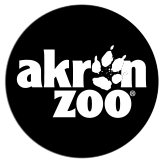Akron Zoo animals enjoy getting gifts too! Animal lovers of all ages will enjoy selecting a special enrichment gift or “toy” from our Amazon wish list or selecting items from our list of needs.
Enrichment items don’t last very long! Our animals are very strong and very adept at figuring out (and often destroying) their favorite items.
We also utilize many items that are either commonly recycled or that can be purchased at local craft or grocery stores.
Here is a list of current items we are in need of. Please contact Stephanie Chandler at 330-375-2550 ext. 7280 or at s.chandler@akronzoo.org before bringing any of these items for donation.
- Brown paper bags (lunch or grocery sized)
- Pillowcases and towels (no snags, rips, or holes)
- PVC (schedule 40 or 80) – pipes, caps, elbows, etc. of any size
- Cleaned out, empty plastic kitty litter buckets
- Kiddie pools/wading pools – earth-tone colors a plus!
- Little Tykes plastic items (waffle blocks, toys, etc.)
- Washable tempera paint
- Paintbrushes (all sizes)
- Dixie cups
- Construction paper
- Packaging paper/butcher paper
What is Animal Enrichment?
Animal enrichment can be anything that encourages animals to exhibit their natural behaviors in order to enhance overall well-being. Depending on the species, some of these natural behaviors include foraging, problem-solving, hunting and playing!
Why is it important?
Unlike animals in their native habitat, animals at the Akron Zoo do not need to find their own food or protect themselves from predators. Instead, they have an awesome dedicated staff that provides them with a balanced diet and regular medical care! But their mental and physical abilities still need to be challenged. That is where enrichment comes in. The animal care staff is constantly thinking of new ways to engage the animals and encourage them to exhibit species-appropriate behaviors.

